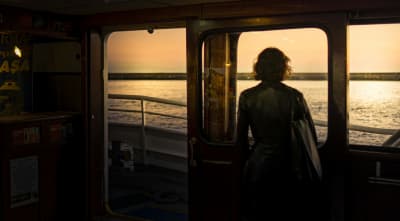“Unraveling decades of suspicion, diplomacy, and strategic brinkmanship.”
From the Shah’s era to the recent geopolitical escalations, Iran’s nuclear ambitions have long stood at the crossroads of ideology, strategy, and diplomacy. This prolonged standoff with the West reflects a deeper narrative of power, resistance, and international bargaining.
From Civil Program to Revolutionary Pause
In the 1960s and 1970s, Iran launched its nuclear program with Western support under the “Atoms for Peace” initiative. However, the 1979 Islamic Revolution halted progress dramatically. Many Western-trained scientists left the country, and trust between Iran and the West collapsed overnight.
By the 1990s, Iran slowly resumed its nuclear development. With the rise of a more conservative leadership and foreign technical assistance, the country began rebuilding its nuclear infrastructure under a veil of secrecy.
Secrecy Breeds Suspicion
The early 2000s saw revelations of hidden nuclear sites, sparking fears of a covert weapons program. The West, particularly the U.S. and European allies, responded with increasing diplomatic pressure and economic sanctions. International bodies demanded transparency, and multiple rounds of negotiations began.
These talks, initially involving European powers, eventually expanded into the P5+1 format (China, France, Germany, Russia, the UK, and the U.S.), highlighting the global concern surrounding Iran’s intentions.
The 2015 Nuclear Agreement: A Hopeful Pause
In 2015, a historic nuclear deal known as the Joint Comprehensive Plan of Action (JCPOA) was signed. It placed significant restrictions on Iran’s uranium enrichment and allowed extensive international inspections. In return, Iran received relief from crushing economic sanctions.
The deal was widely seen as a breakthrough in preventing nuclear proliferation and stabilizing the region. Yet, political divisions inside Iran and in Western capitals ensured the accord would remain fragile.
Breakdown and Backlash
In 2018, the U.S. unilaterally withdrew from the JCPOA, reinstating sanctions. Iran responded by reducing its compliance and expanding its enrichment activities. Trust eroded on all sides, and inspections became increasingly difficult.
Iran's decision to increase enrichment levels and limit oversight reignited fears of a weapons program. Western diplomats pushed for new negotiations, but Iran's internal politics and regional tensions complicated any meaningful progress.
Escalation and Regional Shockwaves
By 2025, regional dynamics reached a boiling point. Israeli airstrikes targeted Iranian nuclear and military facilities, prompting retaliation through missile strikes and proxy groups across the Middle East.
These events destabilized oil markets, spurred refugee flows, and heightened the risk of wider conflict. The United States, while calling for restraint, was seen as tacitly supporting Israel, further complicating diplomacy.
Strategic Interests on All Sides
Each party in this standoff pursues distinct, often conflicting goals:
- Iran seeks regional influence, deterrence against external threats, and relief from economic sanctions.
- The West, particularly the U.S. and Europe, wants to prevent nuclear proliferation and preserve regional stability.
- Israel views a nuclear-capable Iran as an existential threat and insists on preemptive action if diplomacy fails.
The Fragile Path Forward
With global attention once again focused on the Persian Gulf, the options ahead are fraught with uncertainty:
- Diplomatic Renewal: A restructured deal with broader regional guarantees could rebuild trust.
- Military Risks: Further strikes could lead to all-out conflict, especially if civilian infrastructure is hit.
- Nuclear Ambiguity: Iran may maintain a “threshold” capability—close to weapons-grade enrichment but without full weaponization.
The international community now faces a critical juncture. Should it double down on sanctions and pressure, or pursue compromise and mutual security assurances? As history has shown, the stakes of miscalculation are too high to ignore.
Iran’s nuclear story is far more than a technical matter—it is a deeply political struggle rooted in history, identity, and the shifting balance of power.








